Skin Treatment
ACNE
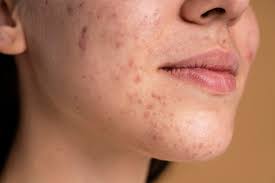
Acne is a multifactorial skin condition that occurs when oil, dead skin cells, and bacteria clog hair follicles. It affects both teenagers and adults and can range from mild blackheads to severe cystic lesions.From hormonal breakouts to cystic acne, Dr. Rohal provides personalized treatment plans using topical therapies, oral medications, chemical peels, and lifestyle guidance to clear your skin and prevent scarring.At MG Clinic, Dr. Rohal treats mild to severe acne with evidence-based, individualized treatment plans to clear current breakouts, prevent new lesions, and minimize long-term scarring.
Common Types:
- Comedonal acne (blackheads, whiteheads)
- Inflammatory acne (papules, pustules)
- Cystic/nodular acne (deep, painful lesions)
Why Treatment Matters:
- Untreated acne can lead to Permanent scarring
- Untreated acne can lead to Dark pigmentation
- Untreated acne can lead to Psychological distress
Treatment Approach by Dr. Rohal:
- Prescription creams with retinoids, salicylic acid, or antibiotics
- Oral treatments like antibiotics, hormonal therapy (e.g., for PCOS), or isotretinoin
- In-office procedures such as chemical peels, drainage of cysts, and acne scar treatments
- Personalized skincare counseling for long-term control and prevention
What to expect from treatment
- Initial improvement within 4–6 weeks; full results in 3–6 months
- Temporary “purging” is normal with retinoid-based regimens
- Consistency is key — acne is treatable but needs patience


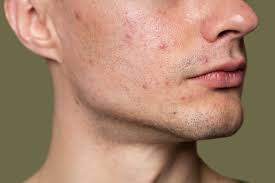
MELASMA
Melasma is a pigmentation disorder caused by overproduction of melanin, often triggered by sun exposure, hormonal changes (like pregnancy or contraceptive pills), or genetics.Characterized by dark patches on the face, melasma is often triggered by sun exposure or hormonal changes. We offer targeted treatments such as pigment-reducing creams, laser therapies, and sun protection strategies to restore an even skin tone.Melasma is also known as the "mask of pregnancy" because it often appears during pregnancy, but it can affect anyone—particularly women with darker skin types (Fitzpatrick III-V) and those exposed to intense sunlight or hormonal fluctuations.
Why Treatment Matters:
- Persist for years
- Early Treatment reduces pigmentation
- Prolonged Treatment can lead to scarring
Patient education and Skincare tips
Avoid waxing, bleaching , or vigorous exfoliation on pigmented areas Always patch test new skincare products Stick to gentle, fragrance-free cleansers and moisturizers Avoid products that cause irritation or burning—this can worsen melasma Follow up regularly to adjust your plan and track progress
Common Types:
- Epidermal – pigment in the upper skin layer (more responsive to treatment)
- Dermal – pigment in the deeper skin (harder to treat)
- Centrofacial, Malar, and Mandibular patterns based on distribution
Treatment Approach by Dr. Rohal:
- Topical depigmenting agents: hydroquinone, azelaic acid, kojic acid
- Chemical peels (mild to medium depth)
- Laser and light therapies (selected cases only)
- Maintenance therapies to prevent rebound pigmentation
- Sunscreen education: mineral-based SPF 50+, hats, and sun avoidance

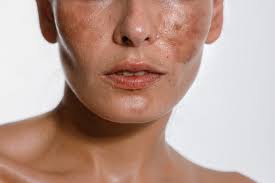
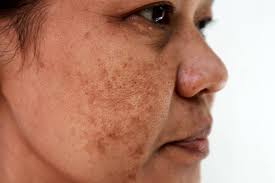
ECZEMA
A chronic, relapsing skin disorder caused by immune dysregulation and a compromised skin barrier. It can present as red, itchy, and scaly patches on the skin.Dr. Rohal helps patients manage chronic itching, inflammation, and dryness with a combination of moisturizers, anti-inflammatory agents, immunomodulators, and lifestyle counseling. Eczema, or atopic dermatitis, is a chronic inflammatory skin condition that causes dry, itchy, irritated, and inflamed skin. It often begins in early childhood but can affect people of any age. Eczema is not contagious, but it can be persistent and may impact quality of life if not managed properly.
Symptoms
Dryness, itching, redness, and sometimes oozing or crusting. Commonly affects face, hands, arms, and behind the knees.
Causes and Triggers
Eczema results from a combination of genetic factors and immune system dysregulation. People with eczema typically have a weakened skin barrier, making the skin more sensitive to irritants, allergens, and microbes.
Why Treatment Matters:
- Itching can disrupt sleep
- Effect mood
- Impair quality of life
Treatment Approach by Dr. Rohal:
- Daily emollients to repair the skin barrier and reduce dryness
- Anti-inflammatory medications: topical steroids or calcineurin inhibitors
- Treatment of skin infections (often bacterial or viral)
- Oral antihistamines or immunosuppressants (for severe flares)

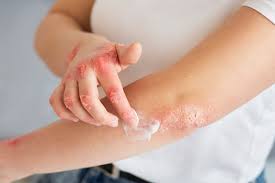
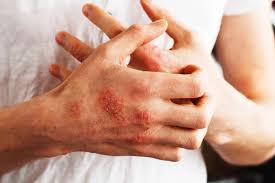
Psoriasis
Psoriasis is a chronic autoimmune skin disease where the immune system mistakenly attacks healthy skin cells, speeding up skin cell turnover. This leads to thick, red, scaly patches that can appear anywhere on the body. It affects about 2 to 3% of the population and often runs in families. Psoriasis is not contagious, but it can be physically uncomfortable, emotionally distressing, and in some cases, linked to other systemic conditions like psoriatic arthritis, metabolic syndrome, or heart disease. It is an autoimmune disease where skin cells build up rapidly, forming thick scales and red patches. It is chronic and may be associated with joint inflammation (psoriatic arthritis).
Is Psoriasis More Than Skin Deep?
Yes. Psoriasis is a systemic inflammatory disease, and around 30% of patients develop psoriatic arthritis, which causes joint pain, swelling, and stiffness. People with psoriasis also have higher risks for:
- Depression and anxiety
- Heart disease and obesity
- Type 2 diabetes
Types we treat:
- Plaque psoriasis
- Inverse psoriasis
- Scalp psoriasis
Treatment Approach by Dr. Rohal:
- Topical creams (vitamin D analogs, salicylic acid)
- UVB phototherapy
- Oral medications: methotrexate, cyclosporine
- Biologic injections targeting immune pathways (e.g., IL-17, IL-23 inhibitors)
- Patient education on triggers, stress management, and lifestyle
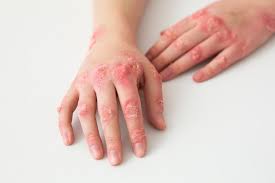

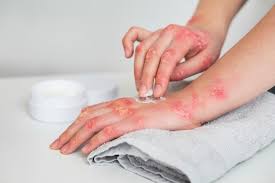
VITILIGO
Vitiligo is a chronic skin condition where the skin loses its natural color due to the destruction or malfunction of melanocytes—the cells responsible for producing melanin (pigment). This results in well-defined white patches on the skin, and in some cases, hair and mucous membranes. Though not medically dangerous or contagious, vitiligo can cause significant emotional stress due to its visible nature.
What Does Vitiligo Look Like?
Milky-white patches that are clearly outlined. Often symmetrical, but can also be localized or segmental. Common on hands, face, feet, elbows, genitals, and around body openings. Hair in affected areas may turn white (leukotrichia). In some people, mucosal areas (lips, gums) are involved.
What Causes Vitiligo?
Vitiligo is considered an autoimmune condition, where the body’s immune system mistakenly attacks melanocytes. Other possible contributing factors include genetic predisposition (runs in families), oxidative stress, neurogenic influences, and environmental triggers (e.g., skin injury, sunburn, emotional stress). It is sometimes associated with other autoimmune diseases like thyroid disorders (Hashimoto’s, Graves’ disease), type 1 diabetes, pernicious anemia, and alopecia areata.
Types of Vitiligo
- Non-Segmental (Generalized): Most common form, symmetrical patches on both sides of the body, often progressive over time.
- Segmental Vitiligo: Affects only one side or a segment of the body, appears earlier in life, often stabilizes after initial progression.
- Focal/Localized Vitiligo: One or a few isolated white patches, may remain stable or progress.
- Universal Vitiligo: Extensive depigmentation covering most of the body (rare).
Treatment Approach by Dr. Rohal
- Topical Therapies: Corticosteroids, calcineurin inhibitors (tacrolimus, pimecrolimus), vitamin D analogs (calcipotriol).
- Phototherapy (Light Therapy): Narrowband UVB (NB-UVB), excimer laser (308 nm).
- Surgical Options (for stable, treatment-resistant cases): Mini punch grafting, blister grafting, non-cultured melanocyte transfer.
- Depigmentation Therapy (for extensive vitiligo): Monobenzone cream.

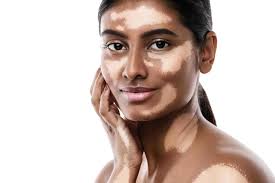
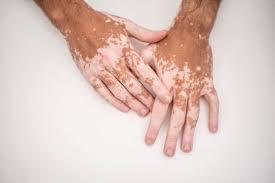
Psoriasis
Psoriasis is a chronic autoimmune skin disease where the immune system mistakenly attacks healthy skin cells, speeding up skin cell turnover. This leads to thick, red, scaly patches that can appear anywhere on the body. It affects about 2 to 3% of the population and often runs in families. Psoriasis is not contagious, but it can be physically uncomfortable, emotionally distressing, and in some cases, linked to other systemic conditions like psoriatic arthritis, metabolic syndrome, or heart disease. It is an autoimmune disease where skin cells build up rapidly, forming thick scales and red patches. It is chronic and may be associated with joint inflammation (psoriatic arthritis).
Is Psoriasis More Than Skin Deep?
Yes. Psoriasis is a systemic inflammatory disease, and around 30% of patients develop psoriatic arthritis, which causes joint pain, swelling, and stiffness. People with psoriasis also have higher risks for:
- Depression and anxiety
- Heart disease and obesity
- Type 2 diabetes
Types we treat:
- Plaque psoriasis
- Inverse psoriasis
- Scalp psoriasis
Treatment Approach by Dr. Rohal:
- Topical creams (vitamin D analogs, salicylic acid)
- UVB phototherapy
- Oral medications: methotrexate, cyclosporine
- Biologic injections targeting immune pathways (e.g., IL-17, IL-23 inhibitors)
- Patient education on triggers, stress management, and lifestyle
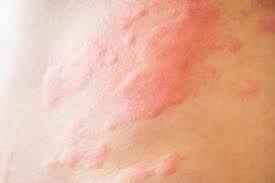

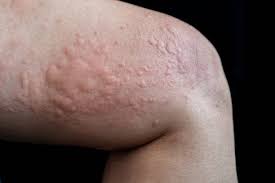
Keloids
A keloid is an abnormal type of scar that develops when the skin overheals after an injury, growing beyond the boundaries of the original wound. Keloids are raised, thick, and often continue to enlarge over time. They can cause itching, pain, tightness, or cosmetic concern — especially when located on visible areas like the ears, jawline, chest, or shoulders.
How Do Keloids Form?
After skin trauma (cuts, surgery, piercings, burns, acne), the body produces collagen to heal the wound. In keloids, this response is excessive and disorganized, leading to raised, fibrous tissue.
Common Triggers:
- Surgical incisions or stitches
- Ear and body piercings
- Acne lesions
- Burns or insect bites
- Tattoos, vaccinations, or even minor injuries
How Are Keloids Different from Hypertrophic Scars?
| Feature | Keloid | Hypertrophic Scar |
|---|---|---|
| Growth | Beyond original wound | Within original wound |
| Persistence | Rarely regress spontaneously | May flatten over time |
| Recurrence | High after excision without care | Lower recurrence rate |
| Common Sites | Shoulders, chest, jawline, ears | Surgical or trauma sites |
Treatment Approach by Dr. Rohal
- Intralesional Corticosteroid Injections: Reduce inflammation, flatten scar tissue, and relieve itching.
- Silicone Gel Sheets or Ointments: Soften, flatten, and fade the keloid over time.
- Cryotherapy (Freezing): Liquid nitrogen freezes and reduces small, firm keloids.
- Laser Therapy: Pulsed dye laser (PDL) reduces redness and improves texture.
- Surgical Removal + Post-Op Prevention: Reserved for resistant or large keloids, combined with steroid injections and silicone dressings post-op.
- Pressure Therapy: Especially effective for earlobe keloids.

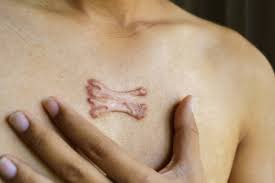
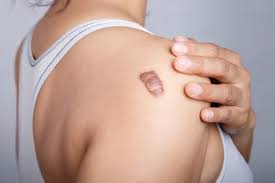
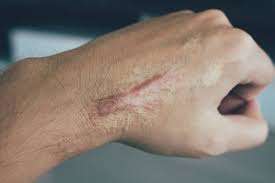
 MG Clinic
MG Clinic